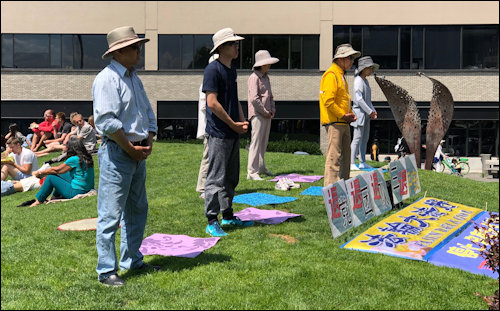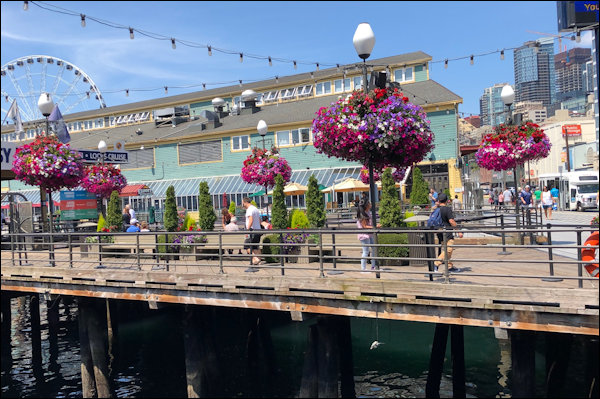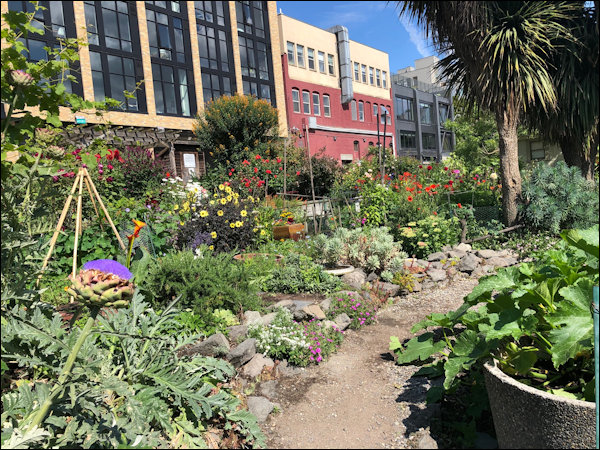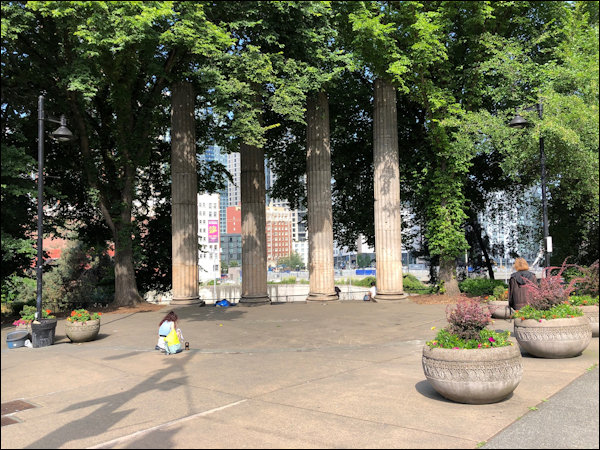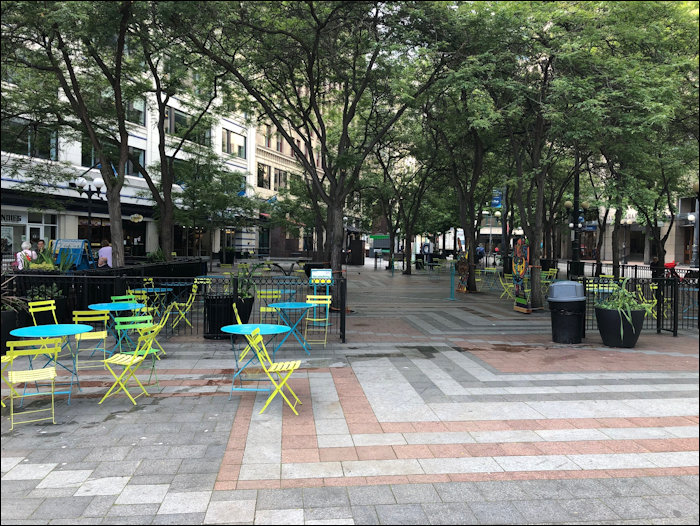
I’m back in Richmond, batteries recharged. Many thanks to Steve and Dick for keeping the fires of rebellion stoked in my absence. Laura and I visited the great Northwest, a region extending from Seattle and Victoria (British Columbia) in the south to Juneau and Glacier Bay in the north. As always, I kept my eyes peeled for examples of place making that might prove instructive to Virginians. Today, let’s talk about pocket parks. Seattle has lots of them.
By way of preamble, there are some things Seattle gets wrong. The city has one of the most acute affordable-housing issues in the country, and it has a homeless problem to match. We encountered numerous homeless people downtown, some of them begging, some of them sleeping in doorways or on benches, and a couple of them sprawled unconscious on the sidewalk. When we were walking off our jet lag early one morning, a woman dropped her pants in plain view and relieved herself on the pavement. So, I’m under no illusion that Seattle is an urban paradise.
But the city does have a lively downtown. The streets remain busy during nights and weekends — at least they do on balmy, sunny days like those we were lucky enough to experience. Downtown is highly walkable. The secret is wide sidewalks, vibrant streetscapes and pocket parks.
Pocket parks are small public places woven into the urban fabric. They don’t create places apart from the rest of the city. They are an integral part of the urban landscape. They invite people to sit, chat, mingle and congregate — and there’s nothing that makes streets more alluring than the presence of other people (unless they’re homeless drug users).
In one small park near the waterfront, we saw these people practicing Falun Gong. (The signs are protesting the repression of the movement in China.)
And here is a public space, built on pilings, near Elliott’s Oyster House. Note the flowers. Seattleites plant flowers everywhere.
Speaking of flowers, I came across this urban garden….
On the opposite end of the greenery spectrum, we encountered this space near our hotel. The classical columns were an interesting touch, although the location — overlooking a freeway — was a bit curious.
I doubt any of these pocket parks will win any architectural awards. None compete with New York’s Central Park for grandeur. But they fulfill an important function in a downtown dominated by high-rise and mid-rise buildings — they create visually interesting, people-friendly havens at the street level. Seattle is best known for its spectacular views of mountains, bays and waterfronts, but the pocket parks make an important, if unsung, contribution to the city’s vibrant urban scene.

